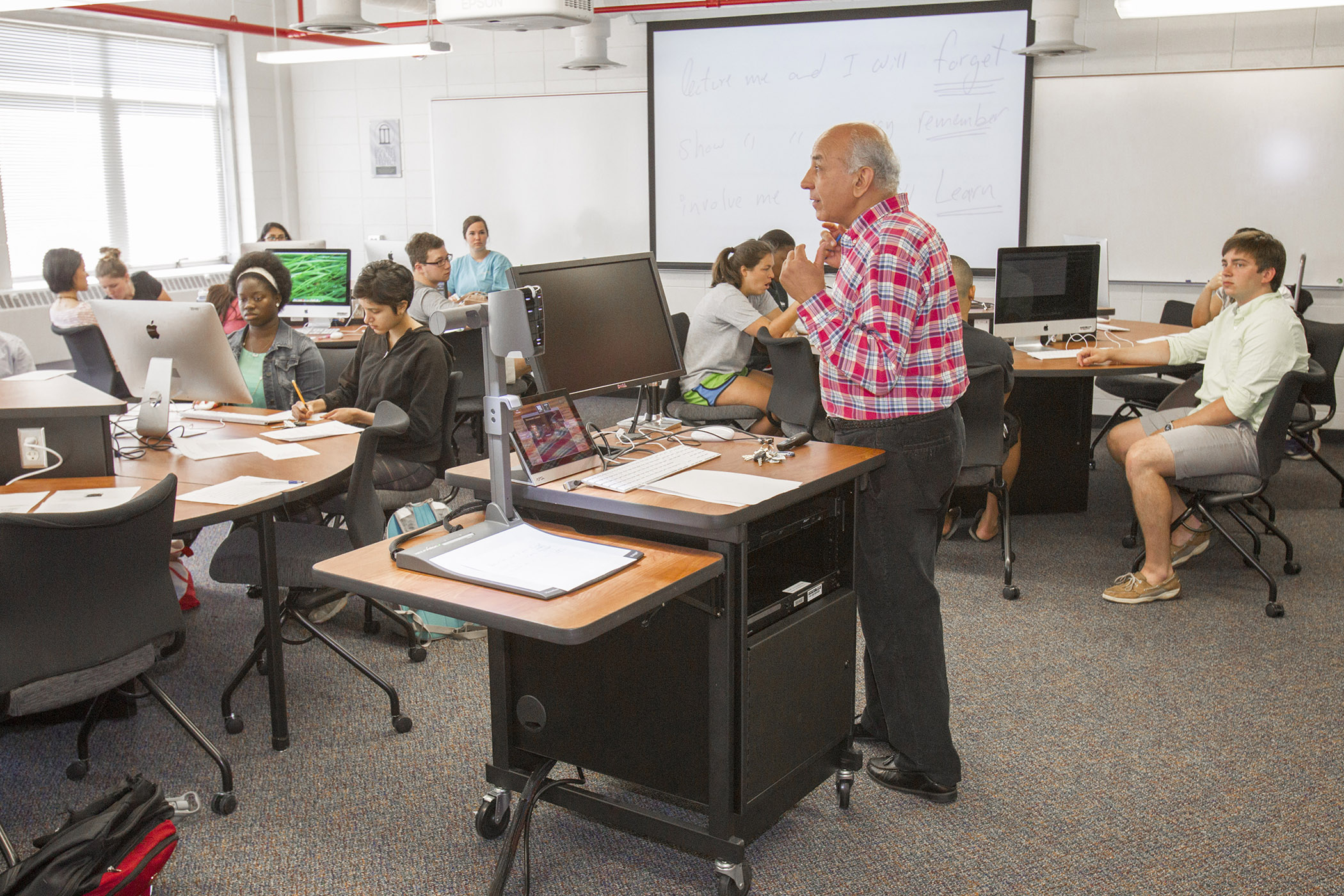Sometimes it takes new tools to achieve the ends of an old idea.
The Biological Sciences Division, part of the Franklin College of Arts and Sciences, has retrofitted a classroom in the biology building with active-learning instructional tools.
Modeled off a SCALE-UP class, which stands for Student-Centered Active Learning Environment for Undergraduate Programs, the classroom positions the instructor literally in the center of the classroom among students. Dozens of large-screen computers for students, a video camera and projection screens at two ends of the classroom are just some of the tools that promote instructor-to-student and student-to-student interaction.
A similar classroom was set up in the physics building in 2012. The Science Learning Center, which is scheduled to open in 2016, will have two SCALE-UP classrooms.
While the gadgets and classroom layout are new, the concept behind the pedagogical philosophy has been around for a while.
William Said, a senior lecturer and Distinguished Honors Professor in Franklin College’s cellular biology department, alluded to this well-established concept during an advanced level Maymester biology and cellular biology class, the first class taught in the SCALE-UP classroom.
Said stood at an instructor’s podium with an old-fashioned pencil and paper. He trained the video camera on the piece of paper as students watched the projector screens. Said wrote down a version of an old proverb about education: “Lecture me, and I will forget. Show me, and I may remember. Involve me, and I will learn.”
That involvement between instructor and students is the point of the SCALE-UP classroom.
The classroom can seat up to 45 students, with a computer for groups of three to share. Each computer’s screen can be shown on the projectors for the entire class to see.
Whereas students get the opportunity for hands-on experience with experimentation in labs, SCALE-UP classrooms offer the chance for students to better grasp concepts about understanding research results, said Mark Farmer, a professor and chair of the Division of Biological Sciences. In practice, Farmer said, working scientists use data to analyze what they are studying.
“That’s how real science works,” Farmer said.
In an active learning environment, students get the opportunity to work with data sets and figure out how to use them.
Farmer said exercises in the SCALE-UP classroom can make learning “much more realistic, much more meaningful and much closer to learning by doing rather than learning by memorizing.”
If the first class, Said’s Maymester course, was any indication of how students like the classroom, then there are promising signs.
“It’s user friendly,” said Katie Rowlett, a biology and psychology major. “Having a computer right in front of my face is nice because I can pull things up and show the class what I’m looking at.”
The SCALE-UP renovation was funded jointly by the Office of the Vice President for Instruction and the Franklin College.
Farmer also credits staff in the Facilities Management Division with helping to prepare the class for renovation.
Farmer views the new SCALE-UP classroom as “an incubator” for biological sciences faculty to try out active learning teaching methods.
By the time the Science Learning Center is complete, biology faculty already will have gotten a chance to hone effective teaching methods.
“I’m a biologist,” Farmer said, “so I know it’ll be an evolutionary process.”


